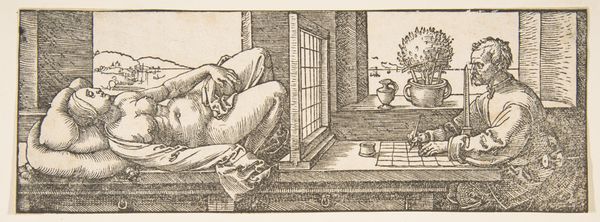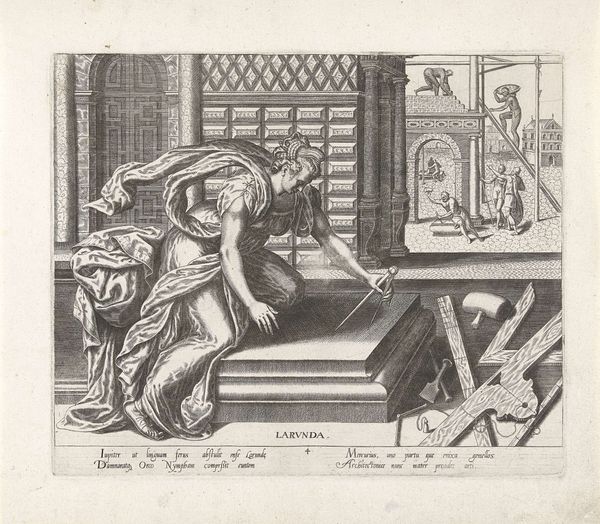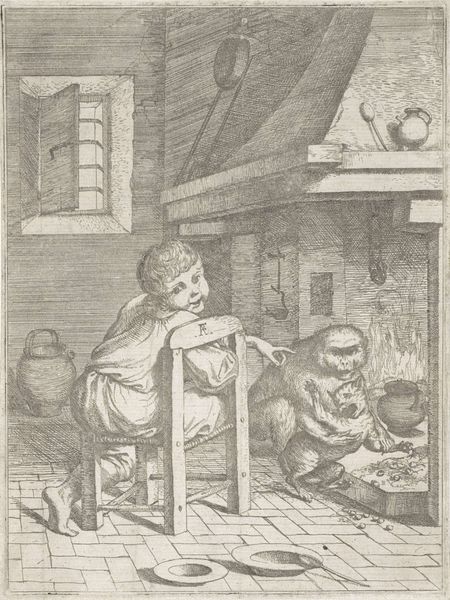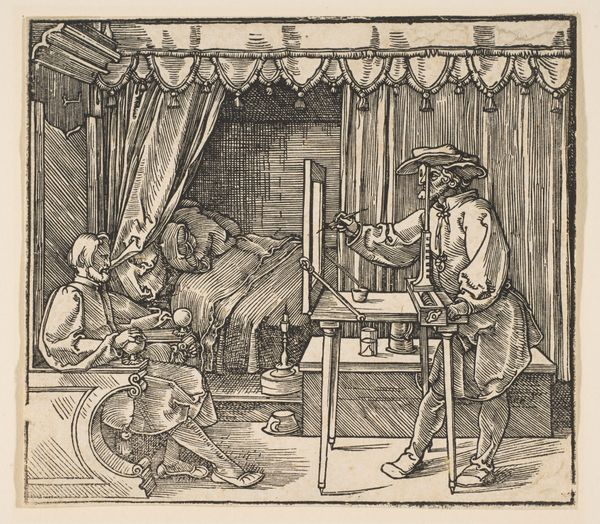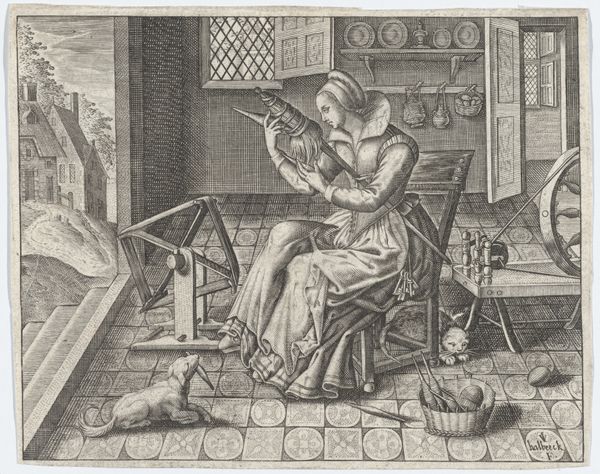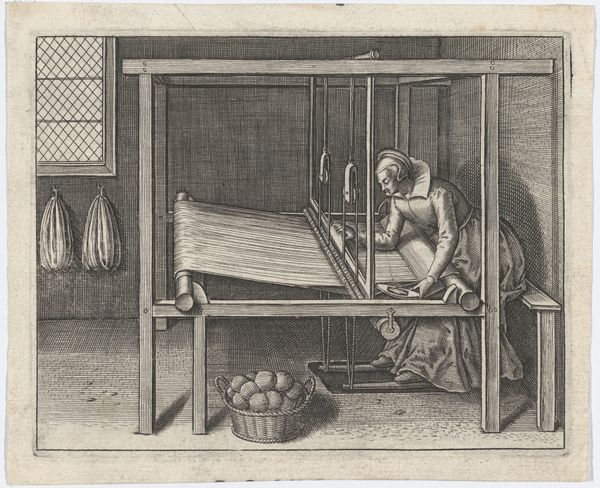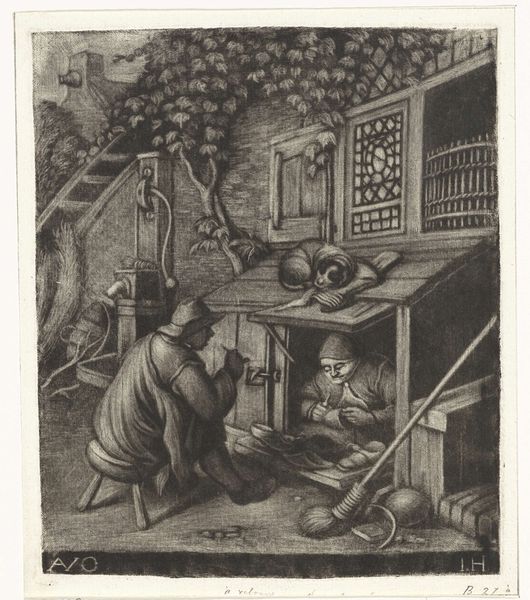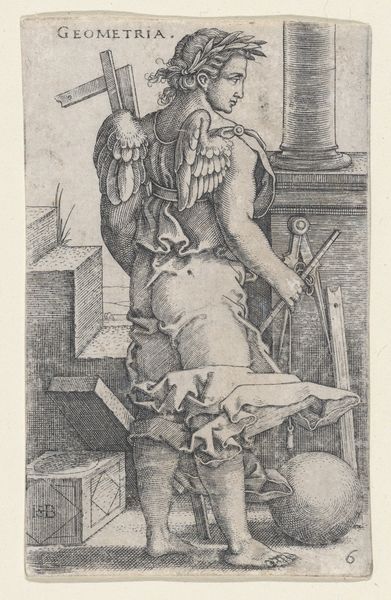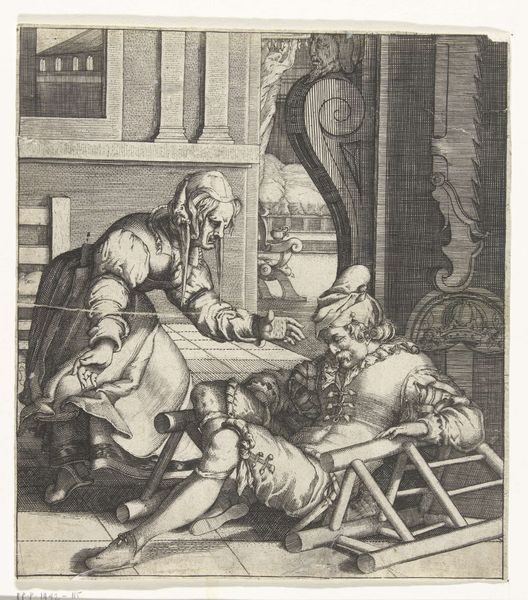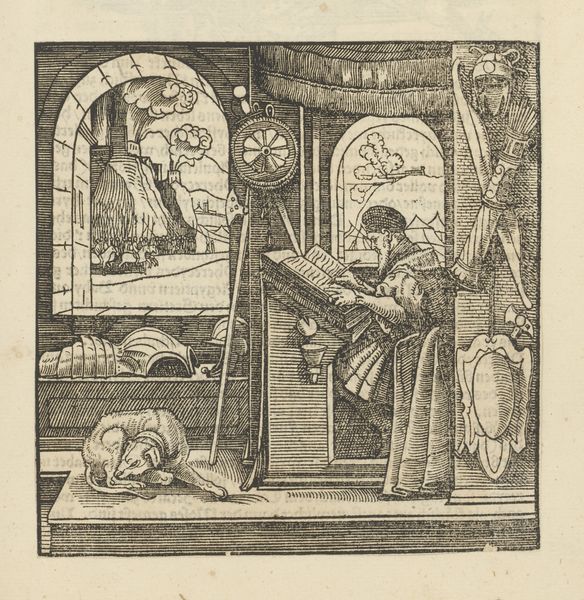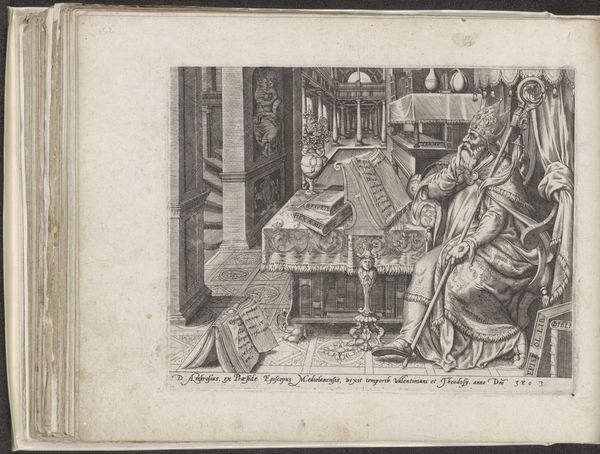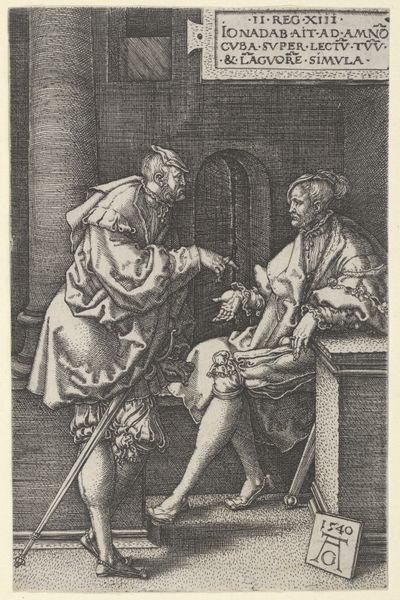
drawing, print, ink, woodcut
#
portrait
#
drawing
#
pen drawing
# print
#
figuration
#
ink
#
woodcut
#
northern-renaissance
#
nude
Dimensions: 77 mm (height) x 215 mm (width) (bladmaal)
Curator: Look at the intense contrast! This print, "Draftsman Drawing a Nude," attributed to Albrecht Dürer, dates sometime between 1500 and 1524. It's currently housed in the SMK, the Statens Museum for Kunst. Editor: Immediately striking – the reclining nude juxtaposed with the active artist. There’s an immediate feeling of the tension between observation and creation. It almost feels like a dreamlike space, the artist caught in the act of translating life. Curator: Dürer, or whoever created this woodcut, masterfully rendered both figures and interior with intricate lines and careful shading. Note how the light streams in, illuminating the model, the window grid serving almost like a scientific instrument, further emphasizing the controlled environment for the artistic labor depicted. Editor: Absolutely. The gridded plane and the draftsman highlight how he sees not just the form but also the means to copy it. The composition and setting recall a workshop or studio - and by rendering the scene like this, there’s a suggestion of not just the image but of art-making itself. Curator: Precisely! And the very medium—a print—underscores the reproducibility and potential market for images during the Northern Renaissance. This allowed for distribution and wider availability to a new and growing audience, reflecting economic shifts toward individualism and capitalism. Editor: The placement of objects--plants, vessels--echo the figures. These could symbolize ideas that Dürer might have wished to reflect--transience or earthly desire perhaps. Curator: And notice how the division created by the open casement of the window directs our eye but it might suggest the social status, or the separation, perhaps the chasm between artist and subject. The construction of that relationship through material choices intrigues me greatly! Editor: It's fascinating how the composition balances realism with, well, almost voyeurism. We're granted this glimpse into the creative process, yet are very aware that we're seeing it through the artist's filter. It feels very charged. Curator: Absolutely, these explorations of form, medium, and social role really expand our ideas about making and viewing images during the Renaissance. I find myself wanting to delve deeper into the workshop practices implied by this complex, economical composition. Editor: And I find myself lingering over the relationship itself. To consider how that visual dialogue continues even now between viewer and subject... fascinating and powerful!
Comments
No comments
Be the first to comment and join the conversation on the ultimate creative platform.
